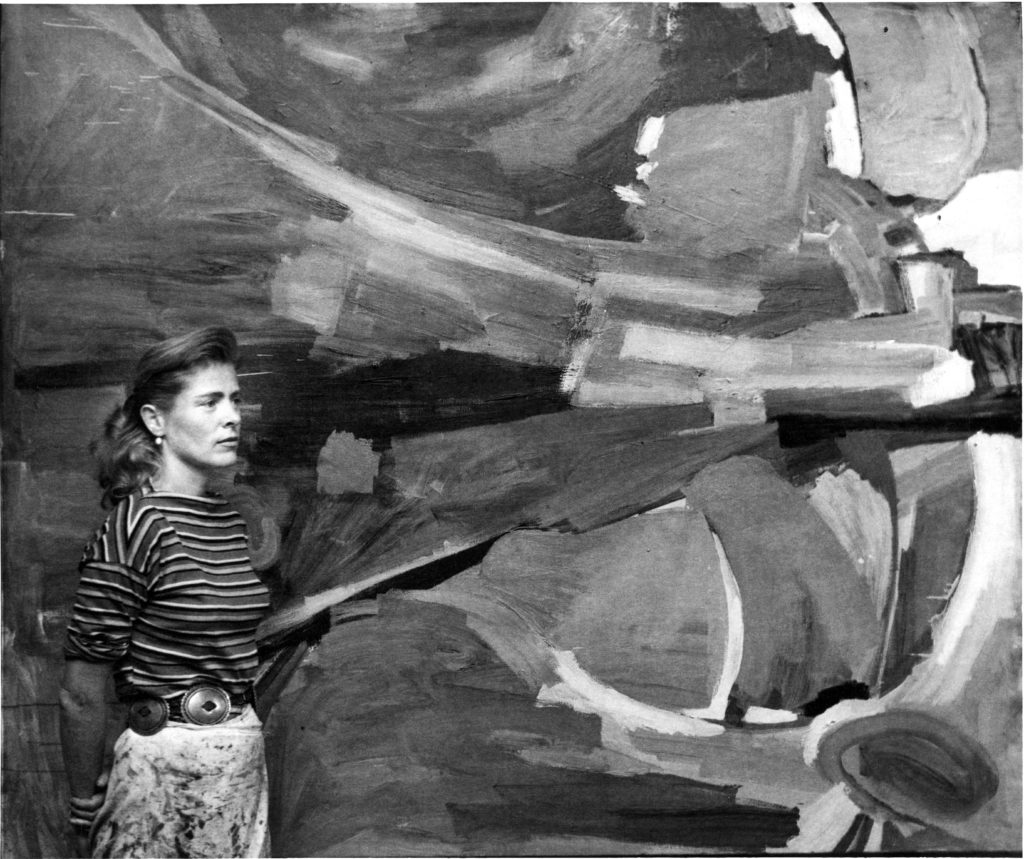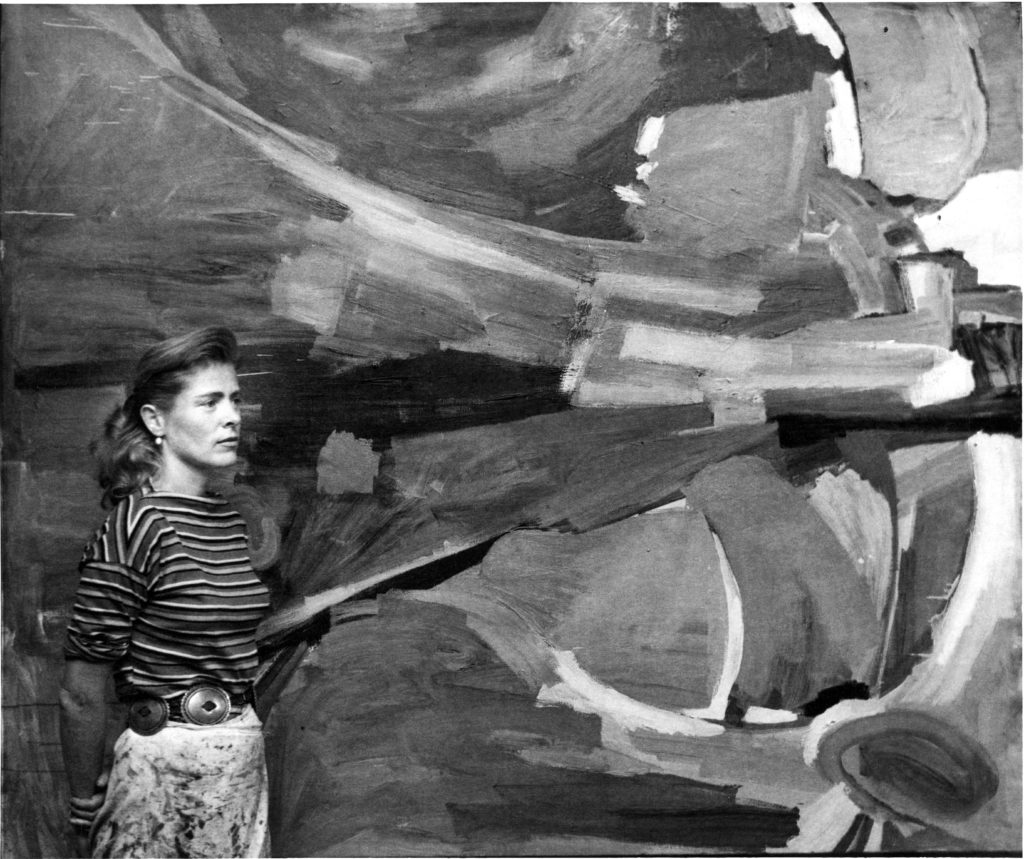[ad_1]

Mary Abbott in her studio, ca. 1950.
COURTESY MCCORMICK GALLERY, CHICAGO
Mary Abbott, whose abstract canvases were at once beguiling and rich with color and texture, died at age 98 on August 23. McCormick Gallery in Chicago, which represented the artist, said that the cause of death was heart failure following a brief illness.
The artist’s early works featured vibrant abstractions, while her more recent pieces frequently depict multifarious flowers. “They change as you paint them,” she once said of her later paintings. “They are alive and they vibrate.”
Like many women who worked in the Abstract Expressionist mode then popular in New York in the 1940s and ’50s, her work had languished without much art-historical recognition until recently when she was one of a dozen painters included in the exhibition “Women of Abstract Expressionism.” The traveling show was organized by the Denver Art Museum and made stops to the Mint Museum in North Carolina and the Palm Springs Art Museum in California. Work by Abbott’s more well-known female contemporaries—including Helen Frankenthaler, Elaine de Kooning, Lee Krasner, and Joan Mitchell—also figured in that presentation.
In an interview produced by DAM for that exhibition, Helen Harrison, the director of the Pollock-Krasner House and Study Center in East Hampton, New York, noted that the women contemporaries to the giants of Abstract Expressionists, were indeed exhibiting their works in galleries, selling them, and were written about. “It’s not as if their work wasn’t being seen,” Harrison said. “It was not taken as seriously as the men, but that was part of the art world’s sexism that they just had to accept. But that didn’t mean that they didn’t take themselves seriously.”
Though her paintings did not feature in the storied 1951 Ninth Street Show in New York, Abbott does make appearances in Mary Gabriel’s latest book Ninth Street Women, which focuses on the lives and careers of five pioneering women working in the filed of abstract painting in the 20th century. Abbott is quoted in the book as saying that she “hated” Jackson Pollock. She added, “His way of making friends was to knock you down and get on top of you.”
Mary Abbott was born in New York in 1921. Her family was descended from President John Adams. She worked with the artist George Grosz as a student at the Art Students League of New York, as well as with Barnett Newman, Mark Rothko, and David Hare at the experimental school, The Subjects of the Artist. She also studied at the Corcoran Museum School in Washington, D.C. A prominent debutante in New York, Abbott appeared on the covers of Vogue, Harper’s Bazaar, and other magazines during the 1940s.
She married painter Lewis Teague in 1943, though the couple separated in 1946. Shortly thereafter, she remarried Tom Clyde, a businessman whose health required them to spend their winters in various parts of the Caribbean, from Haiti to the Virgin Islands. (Ninth Street Women notes that fellow artist Grace Hartigan paid Abbott a visit in the Virgin Islands.)
Beginning in the late ’40s, Abbott began seriously pursuing a career the art world. Throughout the 1950s, she showed in exhibitions at New York enterprises such as Tanager Gallery, Kootz Gallery, Tibor de Nagy Gallery, and the Museum of Modern Art. In 1970, she began working as a visiting professor at the University of Minnesota in Minneapolis, where she spent nearly a decade. She was based in Southampton during her final years.
Like many of her contemporaries, the formal qualities of abstraction were key to Abbott’s becoming an artist. Abstraction “just hit me,” she said in 2016 interview with the Denver Art Museum. “Trying to do things representationally—it just didn’t work for me. [With abstraction,] I could talk in a different way.”
[ad_2]
Source link

